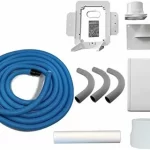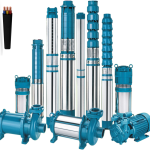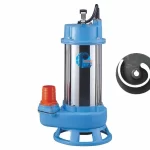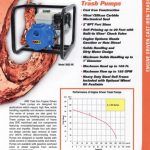When you think about plumbing systems, you might picture pipes, drains and faucets. But there is a powerful hero working behind the scenes in many homes, commercial buildings and industrial facilities. That hero is the submersible sewage pump. These pumps play a key role in moving wastewater and solids from low areas to main sewer lines, helping keep properties clean, safe and free from contamination.
This guide will break down what submersible sewage pumps are, how they work, where they are used and why choosing the right one matters for long-term performance and peace of mind.
What Is a Submersible Sewage Pump?
A submersible sewage pump is a water pump designed to sit fully underwater inside a sewage basin or pit. Its main job is to move wastewater that contains solids away from buildings and into sewer lines or septic systems. These pumps are built tough. They can handle dirty water filled with sludge, debris and organic waste without clogging or overheating.
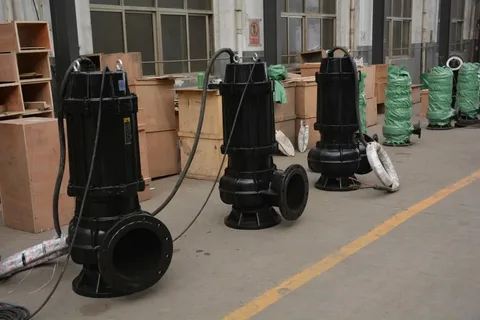
Unlike surface pumps that sit outside the pit, submersible sewage pumps run underwater. This makes them quieter, more efficient and resistant to overheating because the surrounding liquid helps cool the motor.
How Submersible Sewage Pumps Work
To understand the power behind these systems, imagine a sealed, electric-powered motor submerged inside a pit filled with wastewater. As water rises, a float switch lifts and signals the pump to turn on. The pump then forces the wastewater through discharge pipes and out of the building.
When the water level falls, the float drops and the pump shuts off. This automatic process lets the system run only when needed, saving energy and reducing wear.
Most submersible sewage pumps include a strong impeller design that helps grind or push solids through, preventing blockages in the discharge pipe.
Real-World Uses of Submersible Sewage Pumps
Submersible sewage pumps are used in many settings, big and small.
Residential Applications
In homes built below city sewer lines, such as basements or low-level additions, a sewage pump is essential. It moves wastewater from toilets, sinks, laundry systems and basement bathrooms to the main sewer pipe.
If your home uses a septic system, the pump helps send wastewater to the septic tank or drainage field. Without it, sewage would back up, creating health hazards and costly damage.
Commercial and Municipal Uses
Commercial buildings and public facilities rely on submersible sewage pumps to manage large volumes of wastewater. Shopping malls, hospitals, restaurants and schools often install these pumps to keep plumbing systems running smoothly and safely.
Municipal pumping stations also use heavy duty sewage pumps to move wastewater across long distances toward treatment plants.
Industrial and Agricultural Use
Industries such as food processing plants, livestock farms and manufacturing facilities also depend on sewage and slurry pumping systems. These environments often include high solid content, chemicals and organic waste, which require durable pump materials and motors.
Benefits of Using Submersible Sewage Pumps
Reliable Waste Removal
By running underwater and pushing waste upward, these pumps offer consistent, high performance. They are built to work in harsh environments and handle solid waste materials that other pumps cannot manage.
Quiet and Efficient Operation
Because they operate below the liquid surface, they produce less noise than surface pumps. Submersible sewage pumps also run efficiently because the water around the pump keeps it cool, protecting the motor and extending its lifespan.
Reduced Risk of Clogging
The internal design of the pump allows it to handle particles and sludge without frequent blockages. Many models include grinder or vortex impellers to handle tougher waste. This makes maintenance easier and keeps plumbing systems cleaner.
Key Features to Look For
When selecting a sewage pump for your property or project, keep these features in mind:
- Horsepower and flow rate to support your wastewater volume
- Durable construction such as cast iron and stainless steel for long life
- Automatic float switch for hands-off operation
- Thermal overload protection to prevent overheating
- Solid handling capability suitable for your waste type
Investing in the right model reduces breakdowns and protects your system from unexpected emergencies.
Understanding the Difference: Sewage Pump vs Grinder Pump
You may hear about grinder pumps when researching wastewater solutions. While both are submersible systems, they serve different needs.
A sewage pump moves wastewater and small solids, while a grinder pump includes cutting blades that shred larger waste before pumping. Grinder systems are useful in homes where flushing items like wipes, food waste or hygiene products could cause clogs.
For most standard home or commercial plumbing needs, a traditional submersible sewage pump provides reliable performance.
Professional Insights and Maintenance Tips
Even the strongest pumps need proper care. Inspect the pump basin regularly for debris, grease buildup and unusual odors. Test the float switch every few months to make sure the pump activates correctly.
Professional service once a year can help detect motor wear, wiring corrosion or clogged vents. Keeping your pump maintained ensures long life, safe sewage flow and prevents expensive plumbing repairs.
For homes with high water usage or basement bathrooms, consider installing a backup battery or secondary pump to avoid failures during power outages.
Why Homeowners and Contractors Choose Quality Units
Reputable pump systems are built to handle years of continuous use. They offer strong motors, sealed construction and corrosion resistant materials. A reliable pump protects your property value and keeps plumbing systems running smoothly.
We provide dependable pump solutions for residential, commercial and industrial applications so you get consistent performance and long-term value from your system.
FAQs
1. How long does a submersible sewage pump last?
With proper maintenance, most pumps last 7 to 15 years. Heavy-duty systems may last longer in ideal conditions.
2. Can I install a sewage pump myself?
Many homeowners hire a professional, especially for basement or septic setups. Correct installation ensures proper plumbing connections, electrical safety and long-term performance.
3. What size pump do I need?
Pump size depends on your plumbing system, waste volume and lift height. A professional can help calculate the correct horsepower and flow rate.
4. Do submersible sewage pumps need cleaning?
Yes. Periodic cleaning and inspection reduce clogging and extend pump life. It is recommended to check the basin and float switch regularly.
5. Can these pumps handle items like wipes or feminine products?
Standard sewage pumps can struggle with foreign objects. Consider a grinder pump if your system is prone to flushing materials that do not break down easily.
Final Thoughts
Submersible sewage pumps are the unseen protectors that keep wastewater safely moving away from your property. Their reliability, strength and efficiency make them a top choice for homes, commercial buildings and industrial operations.
By choosing a quality pump and maintaining it properly, you ensure clean plumbing, a safe environment and long-term system performance. Whether you are upgrading your current setup or planning a new installation, a dependable sewage pump is an investment in comfort and peace of mind.
If you need guidance selecting the right unit for your application, our experts are here to help with trusted and tested pumping solutions.


